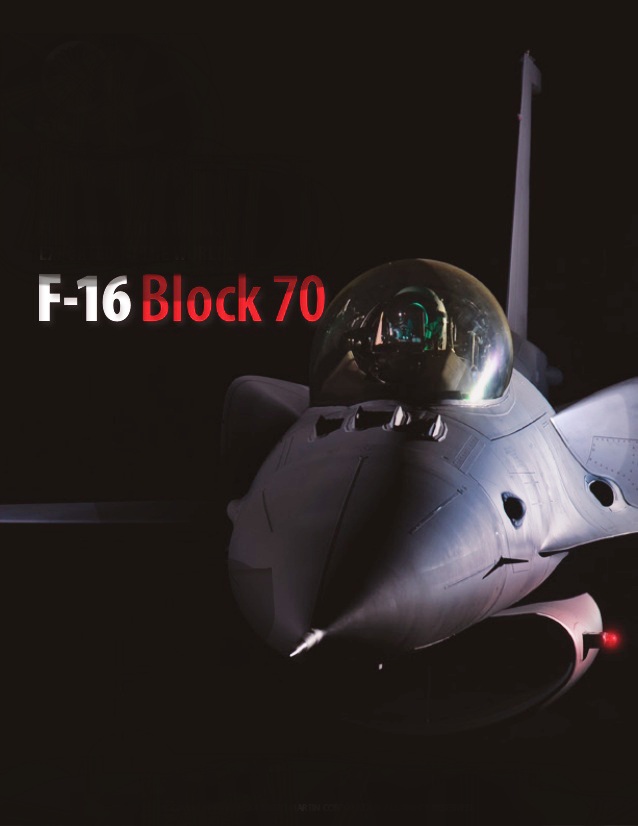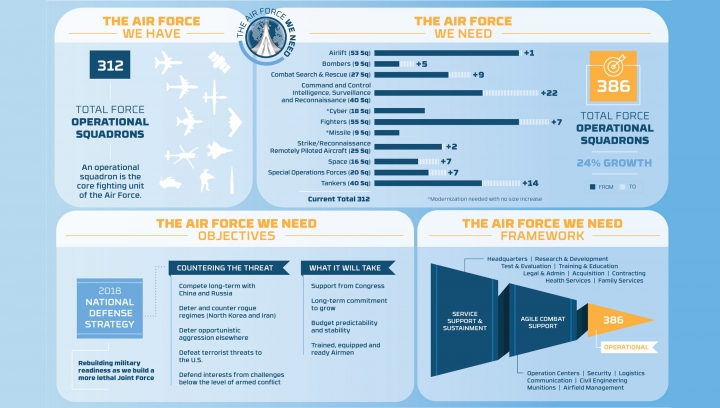Raptor or Lightning. Unreliable? Too many secrets? Too expensive? F(ailure) -35? Next stop is a clean-sheet design?
A near ten minute Scramble read about how and why the USAF is starting with a clean-sheet study for a new Tactical Aircraft (TacAir) fighter.
In 2018, in a surprise move driven by opportunity, senior officials within the Pentagon, USAF and Boeing discussed developing a new F-15, based on the F-15QA purchased by Qatar. In the Fiscal Year 2020 budget, the US Department of Defense requested a USD 1,1 billion support to procure eight F-15EXs of a total planned procurement of up to 144 F-15EXs. Initially, the F-15EX will succeed a part of the older F-15C/D models in the Air National Guard's inventory.
Things can go fast, because on 2 February 2021, the first F-15EX took off for its maiden flight. At this moment, the USAF is making a months-long TacAir study of tactical aviation requirements, analysing and examining a fighter force mix that addresses both near- and long-term requirements, which will be available in time to inform the FY 2023 budget request.
USAF's 2018 National Defense Strategy matrix has not changed. At the time, out of a Total Force of 386 operational squadrons, there were a total of 55 USAF combat-coded fighter squadrons, while seven more were needed. With recently the 355th and 356th Fighter Squadrons erected at Eielson AFB (AK) and in the near future the erection of the 495th Fighter Squadron at RAF Lakenheath (UK), the USAF is already making progress.
As for the older fighter aircraft in USAF's inventory, we note the following. While the oldest operational F-16C/D Fighting Falcons, attached to Air Force Reserve Command's 457th Fighter Squadron have now reached a life span of 36 years, some of Oregon Air National Guard's 123rd Fighter Squadron F-15C/D Eagles are now 43 years of age. This is not the tricky part, as both mentioned squadrons will convert to newer aircraft such as the F-15EX and the F-35A in the near future. The real part is, because of their given age and airframe hours, some fighters within USAF-units have to be replaced somewhere before 2030 with new aircraft.
On 17 February 2021, US Air Force’s top officer, Air Force Chief of Staff General Charler Brown jr. stated that he wants the Pentagon’s Cost Assessment and Programme Evaluation bureau involved so that the TacAir fighter study will have credibility and buy-in from the Office of the Secretary of Defense. In the future, the USAF needs more fifth-generation capability, comparable to the F-22A Raptor and F-35A Lightning II, and a new capability such as the Next-Generation Air Dominance (NGAD) fighter. But it also needs a mix for the lower-end fight.
F(ailure)-35?
The Staff General wants the US industrie to develop an affordable, lightweight fighter to replace the USAF's some 1,000 strong F-16 fleet and complement a small fleet of sophisticated—but costly and unreliable—stealth fighters.
Yes... you read that correct... sophisticated—but costly and unreliable—stealth fighters and he is aiming at the F-35.
The new clean-sheet fighter design would be a high-low mix of expensive 5th generation Boeing F-22s and Lockheed Martin F-35s technology, build-in in an inexpensive so-called 5th gen-minus jet.
It is interesting to learn that a kind-off Lightweight Fighter (LWF) programme, that once lead to the introduction of the F-16 in the USAF (likewise the Joint Strike Fighter programme lead to the introduction of the F-35), is launched again. Years ago, the USAF already requested for the development of an affordable, lightweight fighter to replace the F-16, but through the years, with lots of research and development, that lightweight replacement fighter got heavier and more expensive as the USAF and lead contractor Lockheed Martin packed it with more and more new technology.
Brown continued its comments with the fact that the ultra-modern and sophisticated, heavy and some USD 100 million a piece F-35 (actual costs are a little lower, the latest built LOTs are estimated at USD 80-85 million a piece) was intended as the solution to a problem*, but it now became a problem itself. The stealthy design with most-advanced sensors is also tough to maintain it and not that reliable as expected (so far). The intention for the JSF was once the development of a low-cost, lightweight fighter that was easy to use in an all-aspect war. But the F-35 evolved into a platform that is focussed on a high-end war and nearly impossible to use in a low-end fight. So the Lightning II is too advanced for the job.
So, the USAF is in need for a fighter for its day-to-day operations as well as a fighter that can be used in a "simple" war environment (not to down-play any war as every war is complex and terrible). But for example, a war in Somalia or Afghanistan does not need the advanced and expensive F-35 capabilities.
The USAF top acquisition official Will Roper earlier said that he wanted to buy new F-16s (Block 70 aircraft are very well priced somewhere around USD 55-60 million). But Brown shot down that idea, saying he doesn’t want more of the "classic Fighting Falcon", as the latest versions of the F-16 are upgraded to the max and fully packed with sensors and it is non-stealthy. Additional systems simply do not fit anymore in the body of that design. The now suggested clean-sheet design must have more internal space for the latest technology and internal weapons, must be more-or-less stealthy and cheap to build and maintain.
The Lightning II is entering its fifteenth year and the USAF now has around 250 aircraft in use. Many delays, cost overdues, cuts in the programmes, new wishes in the body of that aircraft lead to dissatisfaction, also with allied users of the F-35. The USAF is already looking at possible serious cuts to the programme and a cross-road for the type is nearing. The USAF could deliberate end the F-35 production after just a few hundred aircraft are delivered. In that way they can redirect tens of billions of dollars to a new LWF. But... there is always a but... will the USAF and industry ever be capable in developing such a fighter: capable, light and cheap. Often these kinds of low-end fighter jet programmes result in surely enough complex, heavy weight, and costly aircraft types that eventually result in a... high-end jet.
Fact is that the F-35 is new, like the F-16 was once new. And looking back to the seventies and early eighties, the days the F-16 was introduced in the Air Force (and allied air forces) and saw its early years of operations, likewise discussions were spread about that type. So maybe... the F-35 will escape the discussions and will grow to a great aircraft like the Phantom II and Fighting Falcon/Viper.
* It is said that Brown’s comments to the above are a tacit admission that the F-35 has failed. One aircraft type like the thousands ordered F-35 can not replace - as supposed in the 1990s - all of the existing tactical warplanes (like the F-16, A-10, AV-8, F/A-18) in the inventories of the big three: US Air Force, Navy and Marine Corps.
F-15EX Photo by Alex Farwell




